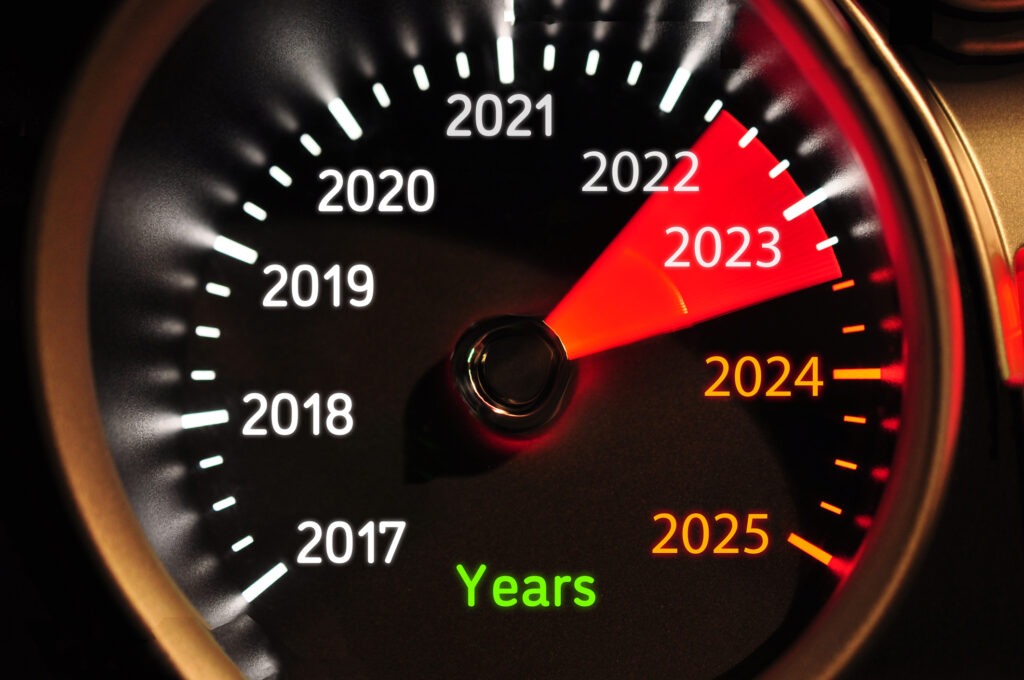European new-car outlook weakens despite second month of growth
19 October 2022

New-car registrations in the EU enjoyed their second consecutive month of year-on-year growth in September. The 9.6% gain was more than double the 4.4% recorded in August, which ended 13 consecutive months of decline.
The latest data released by the European Automobile Manufacturers’ Association (ACEA) show that 787,870 new cars were registered in the EU last month. Registrations in the wider European region increased 7.9% year on year, nudging 1.05 million units, as the UK and EFTA markets of Iceland, Norway, and Switzerland did not match the EU’s pace of growth.
September’s figures confirm the expected improvement in new-car supply, which has been constrained by pre-existing semiconductor shortages as well as additional challenges caused by the war in Ukraine and COVID-19 lockdowns in China.
As the supply situation continues to recover, Autovista24 has subtly revised the EU new-car market outlook for 2022 upwards due to higher forecasts for Germany and Spain. However, the outlook for the wider European region is weaker as these gains are negated by downgrades to the forecasts for the UK and EFTA markets. The 2023 outlook is poorer too as the cost-of-living crisis engulfing the region weakens underlying demand.
Balance of big five markets below expectations
All five of Europe’s leading new-car markets gained year on year in September, ranging from 4.6% growth in the UK to 14.1% in Germany. The double-digit increases in Germany and Spain exceeded Autovista24’s expectations, and France performed slightly better than forecast too. Conversely, Italy and the UK were weaker than anticipated, despite both markets expanding by about 5% year on year. The net effect is that the volume of new-car registrations across all five markets, just under 770,000 units, was about 50,000 lower than predicted.
The latest official data from Germany’s Kraftfahrt-Bundesamt (KBA) shows that new-car registrations jumped by 14.1% year on year and totalled 224,816 units last month, following a gain of just 3% in August. Similarly, the seasonally-adjusted annualised rate (SAAR) increased from 2.52 million units in August to 2.77 million in September.
The first nine months of 2022 paint a clearer picture though, as the number of new-car registrations was down 7% year on year, falling to a low of just 1.87 million units. Nevertheless, as the German market exceeded expectations in September, Autovista24 has adjusted its forecast and projects that new-car registrations will drop 3.3% to 2.54 million units in 2022.
A total of 67,240 new cars were registered in Spain during September. The 12.7% year-on-year gain was an improvement on the 9.1% growth in August, and the SAAR achieved its highest level for any month in 2022, even exceeding one million units. Accordingly, the year-to-date contraction has reduced to 7.4%, but supply remains challenging, and demand is undermined by the squeeze on household budgets.
Given the better-than-expected market performance last month, however, Autovista24 has modestly increased its Spanish forecast for 2022, which anticipates 826,000 new-car registrations, marking a year-on-year decline of 3.9%.
France’s new-car market grew 5.5% year on year last month, slightly higher than the 3.8% growth recorded in August. However, the base of comparison was lower as the September 2021 contraction in the French new-car market (down 20.5%) was far greater than in August 2021 (down 15%). Accordingly, the SAAR merely edged forward to 1.8 million units, from 1.77 million in August.
As this aligns with Autovista24’s prediction for the month, the volume forecast for 2022 has been held at 1.57 million units, 5.2% lower than in 2021. However next year’s French outlook has been reduced to 1.87 million new-car registrations, equating to growth of 18.7%. This is 15.7% lower than the 2.2 million new cars registered in 2019, prior to the COVID-19 pandemic.
There were 5.4% more new cars registered in Italy last month than a year earlier, but the growth rate is lower than the 9.9% recorded in August. Moreover, this should have been higher as the new-car market contracted by 32.6% in September 2021, compared to a 27.2% downturn in August 2021. This explains the SAAR reduction to 1.39 million units, back to the levels seen in June and July.
Aside from supply challenges, falling consumer confidence, and rising inflation, new-car registrations have been restrained in Italy as consumers awaited the reintroduction of purchase incentives. These were reinstated on 25 May, and at the beginning of August the Italian government extended the availability of the incentives to rental and leasing companies, which were previously excluded.
These measures should support demand for electric vehicles but will take time to flow through to registrations. Given the derailed recovery in September and economic pressures, Autovista24 has downgraded its Italian forecast for 2022 to 1.34 million units, a year-on-year decline of 8%. The outlook for 2023 has also been reduced to 1.66 million units. At this level, the market would be 13.6% smaller than in 2019.
The UK new-car market enjoyed its second consecutive month of year-on-year growth (up 4.6%) in September, despite there being one less working day than in September 2021 because of the funeral of Queen Elizabeth II. While this marks an improvement on the adjusted 3.4% downturn in August, the market performed below Autovista24’s prediction for last month, although that forecast did not factor in any impact on activity due to the period of national mourning.
Moreover, the mounting financial pressure on businesses and consumers alike will inevitably suppress underlying demand and Autovista24 has downgraded its 2022 UK forecast to 1.56 million units. This equates to a year-on-year decline of 5.2%, and a 32.4% contraction compared to the pre-pandemic level of 2019. Although countless new-car orders will not be fulfilled this year, the weaker demand assumption means Autovista24 has also reduced its new-car registrations outlook for 2023, to 1.8 million units.
EU forecast strengthens, Europe weakens
In the first three quarters of 2022, cumulative new-car registrations in the EU amounted to fewer than 6.8 million units, marking a 9.9% downturn even against the low base of comparison in 2021. Moreover, compared to the same period in pre-pandemic 2019, the EU new-car market has shrunk by almost a third.
Autovista24 assumes that supply bottlenecks will continue to ease in the final quarter of 2022, but this was already factored into last month’s forecasts. The net effect of this month’s changes is that the 2022 outlook for EU new-car registrations has been increased by 25,000 units to 9.21 million units, equating to a year-on-year contraction of 5.1%.
As expectations are weaker for the EFTA markets and the UK (where inflation topped 10% in July and showed no sign of easing in September), the wider European region is forecast to decline by 5.2% this year, to 11.16 million new-car registrations.
The cost-of-living crisis will reduce order intake, but the market will continue to rely heavily on fulfilling orders placed even before energy costs and inflation started to rise this year. For 2023, Autovista24 forecasts fewer than 13.3 million new-car registrations in Europe, up 19.1% on the assumption for 2022.



